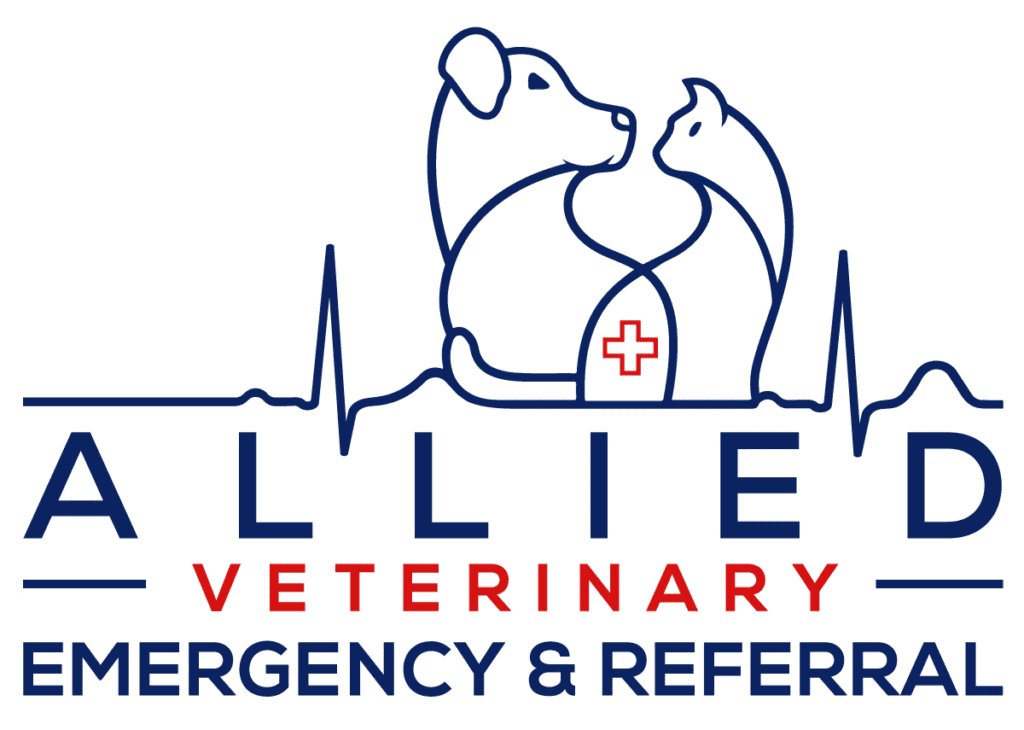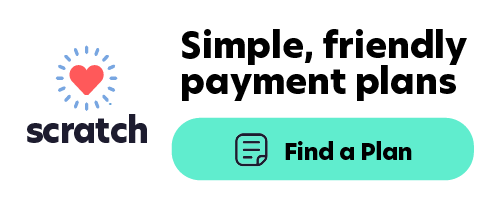New Oncology Department is Scheduling Appointments
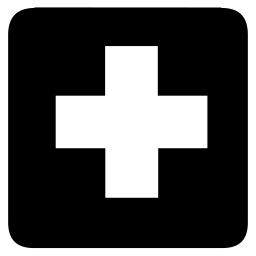
We are pleased to welcome Michelle R. Custead, DVM, MS, DACVIM (Oncology) who will begin scheduling consultations on March 11, 2025. To refer a patient, please call (763) 463-9800 or email oncology@alliedervet.com.
Quick Access to all Five Locations

5 Locations to Serve You
Brooklyn Park
View Details
Minneapolis
View Details
Eau Claire
View Details
Rochester
View Details
Eden Prairie
View Details
Surgery is available in Brooklyn Park AND Eden Prairie – For surgical consultation, please call (763) 463-9800.
Urgent Care in Brooklyn Park – Available 7 days/week, noon-midnight, in addition to our fully staffed ER
Veterinary Partner Discount Program – For eligibility requirements and to enroll, click here.
Investing in Patient Care with New Advanced Technologies

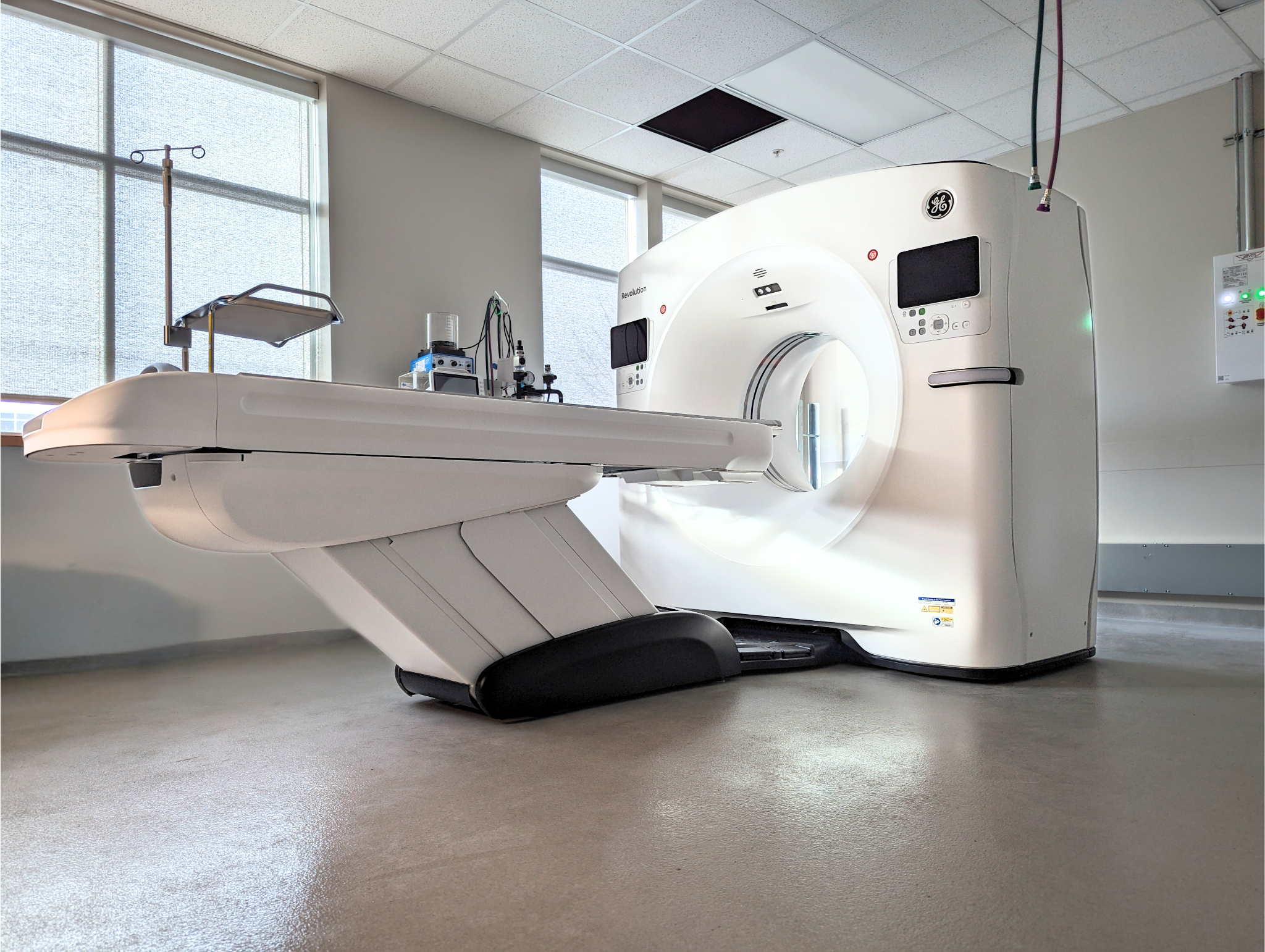
128-slice CT Scanner
Why a 128-Slice CT Scanner Makes All the Difference in Emergency Veterinary Care
Accurate and fast diagnostics can be the difference between life-saving treatment and unnecessary delays. One of the most powerful tools in veterinary emergency care is Computed Tomography (CT) scanning, but not all CT machines are created equal.
At Allied, we’ve invested in our patients and referring community by being the first referral center in the upper Midwest to purchase a cutting-edge 128-slice CT scanner, setting us apart from other clinics in the area that rely on older, lower-slice models. But what does this mean for your patient’s care?
How a 128-Slice CT Outperforms Lesser Models
1. Faster Scanning for Critical Situations
In emergencies, pets don’t have time for prolonged imaging. A 128-slice CT captures high-resolution images in mere seconds, reducing scan times compared to lower-slice scanners. Less time under anesthesia means a safer experience for patients.
- 128-Slice CT: Scans completed in seconds, and may only need heavy sedation for basic scans
- Lower-Slice CTs: Can take minutes, and require general anesthesia, increasing stress and risk
2. Unmatched Image Quality for Accurate Diagnoses
A higher slice count means better image resolution. The 128-slice CT provides exceptional detail, allowing
our veterinarians to detect even the smallest abnormalities that lower-slice models might miss.
Better for detecting:
✔️ Small tumors including early metastasis
✔️ Internal bleeding and organ damage
✔️ Subtle fractures
3. Safer for Your Patients – Lower Radiation Exposure
Traditional CT scanners may require multiple scans to achieve diagnostic accuracy. With our 128-slice CT, fewer passes are needed, meaning less radiation exposure while still delivering unparalleled image clarity.
- 128-Slice CT: Advanced technology minimizes radiation
- Lower-Slice CTs: More scans may be needed, increasing exposure
4. Superior Cardiac & Neurological Imaging
Heart and brain conditions in pets require extremely high-resolution imaging to detect subtle abnormalities.
Our 128-slice CT scanner excels in:
- Cardiac Exams: Captures the entire heart in a single heartbeat, ideal for diagnosing heart disease.
- Scans for traumatic injuries: Detailed imaging of all areas of the body, helpful for detecting subtle
fractures, hemorrhage, and other injuries.
Bottom line:
A 128-slice CT scanner is significantly faster and more precise. This means better image clarity,
quicker diagnosis, and improved treatment outcomes.
Investing in Patient Care with New Advanced Technologies
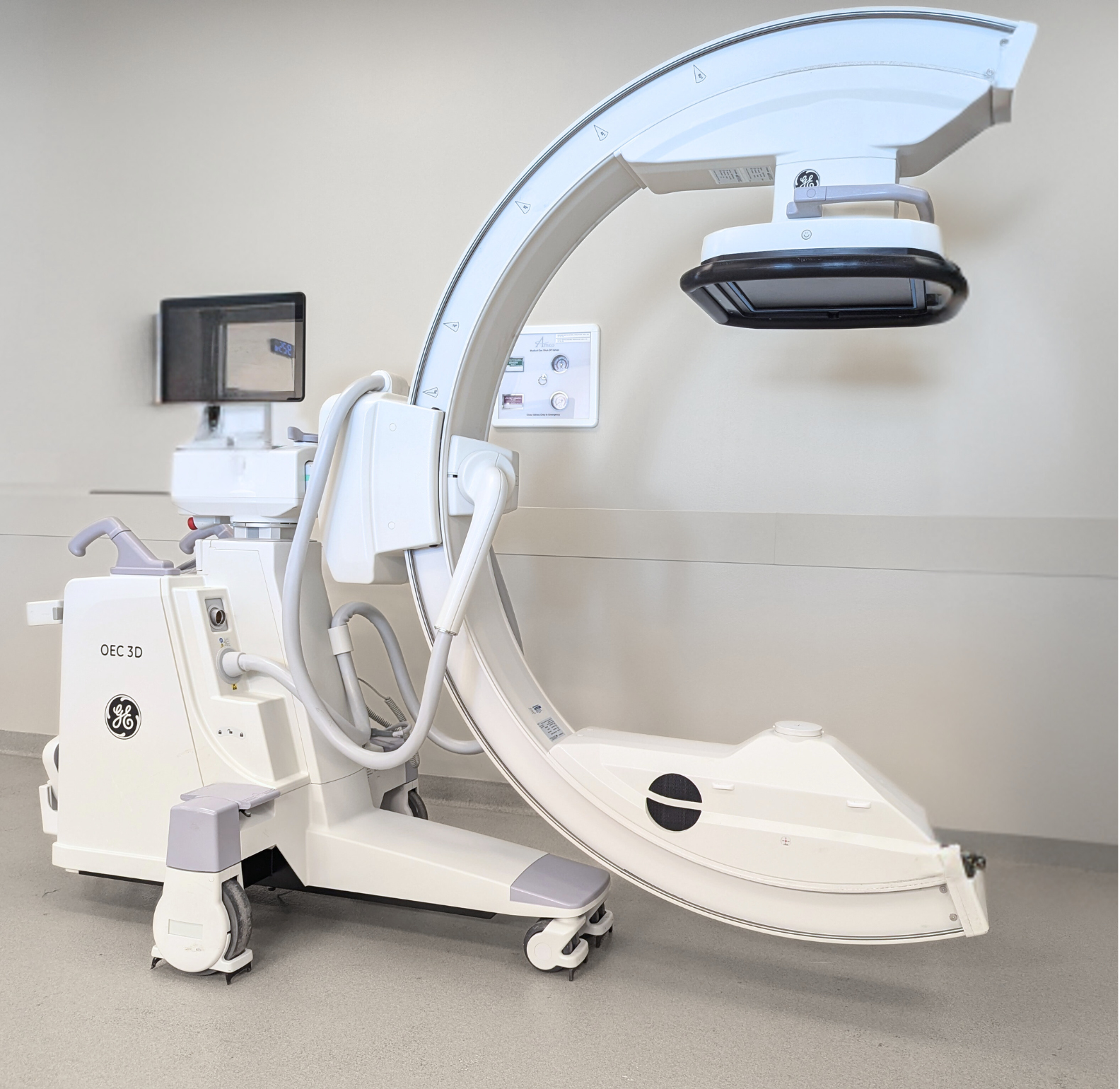
3D C-Arm
3D C-Arm is a revolutionary tool that offers unparalleled precision compared to traditional C-Arms. This is the very first companion animal use of such advanced technology in the upper Midwest!
Why Our 3D C-Arm Provides Unmatched Imaging for Your Referred Patients
When you refer a patient to us, you can rest assured that our superior imaging capabilities lead to more accurate diagnoses, better surgical outcomes, and reduced risks for your patients.
1. 3D Imaging vs. Traditional 2D C-Arm: What’s the Difference?
Traditional C-Arms provide two-dimensional (2D) X-ray images, limiting depth perception and requiring multiple angles to assess complex fractures, joint issues, or internal abnormalities. In contrast, our 3D C-Arm generates high-resolution, three-dimensional images, offering a comprehensive view of anatomy with superior detail.
Benefits of 3D Imaging:
✔️ Provides a 360-degree, multi-angle view of bones, joints, and soft tissue
✔️ Eliminates blind spots caused by 2D imaging limitations
✔️ Enhances accuracy for fracture repairs, orthopedic surgeries, and spinal procedures
In critical cases, a clearer image means faster, more precise decision-making—reducing time under anesthesia and improving patient safety.
2. Improved Surgical Accuracy & Patient Outcomes
A misaligned fracture repair or incorrectly placed implant can lead to complications, repeat
surgeries, and unnecessary discomfort for pets.
With our 3D C-Arm, surgeons can:
✔️ Verify bone alignment and implant placement in real-time
✔️ Reduce the need for post-operative corrections
✔️ Ensure better surgical precision, especially in delicate procedures
This means fewer complications, shorter recovery times, and better overall outcomes for referred patients.
3. Faster, More Efficient Workflow for Emergency Cases
When treating trauma patients, time is critical. Traditional C-Arms often require multiple images from different angles, leading to longer scan times and delayed decision-making.
The 3D C-Arm captures a full 3D model in just seconds, allowing us to:
✔️ Speed up diagnoses – Reducing time spent on imaging
✔️ Shorten anesthesia time – Safer for critical patients
✔️ Make immediate intraoperative adjustments – Ensuring optimal results in one procedure
For emergency cases like complex fractures, joint dislocations, or spinal injuries, this efficiency is a game-changer.
4. Lower Radiation Exposure for Pets and Staff
Radiation safety is a concern for all veterinary professionals. Since a 3D C-Arm provides a complete image in a single scan, there’s less need for multiple exposures, reducing overall radiation levels for both pets and veterinary staff. This means safer diagnostics and treatment for your referred patients.
✔️ 3D C-Arm: Captures full 3D images with minimal exposure
✔️ Traditional 2D C-Arm: Requires multiple shots from different angles, increasing exposure
5. Best for Orthopedic, Neurological, and Trauma Cases
While traditional C-Arms work well for routine imaging, they fall short in complex emergency and orthopedic cases.
Our 3D C-Arm is especially valuable for:
✔️ Fracture Assessments & Repairs – Ensuring proper bone alignment and reducing surgical complications
✔️ Dental & Maxillofacial Surgeries – Providing detailed views of teeth, jaw, and skull structures
✔️ Joint & Limb Procedures – Enhancing accuracy for TPLO, TTA, and arthroscopic surgeries
✔️ Neurological & Spinal Cases – Crucial for diagnosing disc herniations and spinal fractures
✔️ Emergency Trauma Cases – Rapid imaging for critically injured pets
If your patients require advanced orthopedic or neurological procedures, referring them to a clinic with a 3D C-Arm ensures the best possible diagnostic and surgical accuracy.
Have a case to refer? Call us at (763) 463-9800.
Upcoming CE Event for Technicians
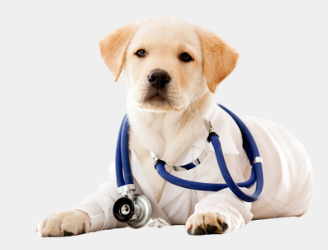
So Many Tubes
March 3rd, 2025 – Rochester Public Library, 12pm-2pm.
Taught by Chrissy, CVT, VTS (Emergency/Critical Care), she delves into the management of chest tubes, urinary catheters, feeding tubes, and sampling catheters, discussing their purpose and utilization.
Space is limited. If necessary, a second program will be offered at a future date.
RSVP by emailing your clinic name and how many attendees (max 2 per clinic) to esmith@alliedervet.com.
DVM Q&A: Are there financial assistance options available for clients who need urgent or specialty care?

Yes, we understand emergencies are typically not planned for. That’s why we offer a variety of payment options including cash, Visa, MasterCard, Discovery, and American Express, plus:
We also have an Angel Fund at each of our 5 locations. For those who are able, or want to assist other animals in need, individuals can “round up” or donate to mybalto. To participate or learn more, simply click on one of the links found on our Pet Parents website page.
Tech Tip: Rapid Triage
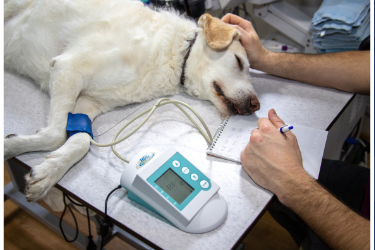
Rapid Triage: Recognizing True Emergencies in Practice*
Seeing a true emergency in general practice is not an everyday occurrence. Here are some tips to help you triage an incoming patient.
Start with a RAP (Respiration, Alertness, Perfusion)
If you perform a RAP correctly you will quickly assess the 3 major systems; Cardiovascular, Neurological and Respiratory
Respiratory
When performing a physical exam it is important to step back and simply look at how the patient is breathing. Your sight will be one of the most important tools at determining if the patient is having difficulty breathing or not. If there is any respiratory distress, the patient should be given oxygen supplementation until treatment and diagnostics can begin.
Alertness
Upon initial presentation, the level of consciousness (LOC) should be assessed.
✔️ Alert: Normal behavior and is responsive
✔️ Depressed: Awake but subdued. Uninterested in environment
✔️ Delirious: Awake but altered perception. Responds inappropriately to stimulus
✔️ Stuporous: Remains in sleep state. Only aroused by strong stimulus
✔️ Comatose: Deep unconsciousness. Unable to rouse despite stimulus
Perfusion
The most common conditions that can cause a change in cardiovascular status are hypovolemia, anemia, sepsis or cardiac dysfunction. Mucous membrane color may be altered from a normal healthy pink to a muddy, grey or pale color. Any change in mm color is a life-threatening emergency. Capillary refill time should always be under 2 seconds. During cardiovascular collapse, you may see an increase to 3 seconds or greater.
Heart rate may be either increased or decreased. Pulse strength may be either bounding or weak. Both the heart rate and pulse rate may be irregular or nonsynchronous. One of the key indicators in the early stage of shock is an elevated heart rate.
*Phone triage is another set of skills that we’ll cover in a subsequent issue.
Information courtesy of VetGirl – for the complete article, click here.
Vote for Allied!

Thank You!
We have been nominated once again for Minnesota’s Best, the Star Tribune Readers’ Choice Award. Please consider voting for Allied Veterinary Emergency & Referral at the button below.
